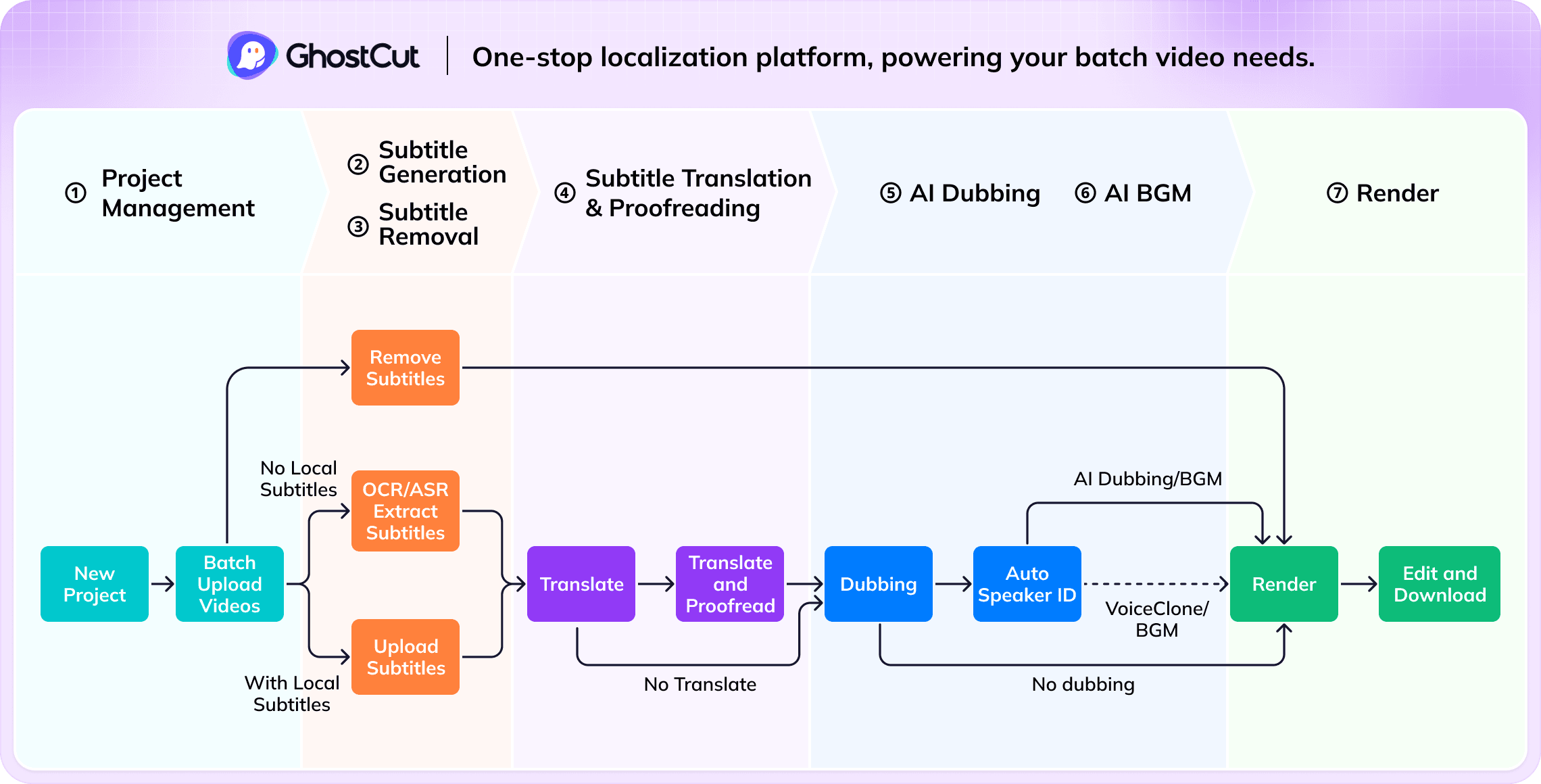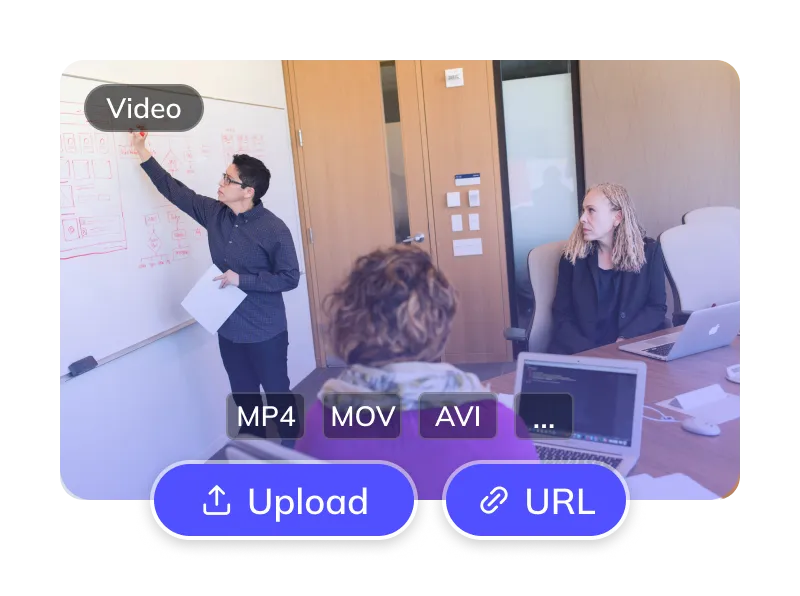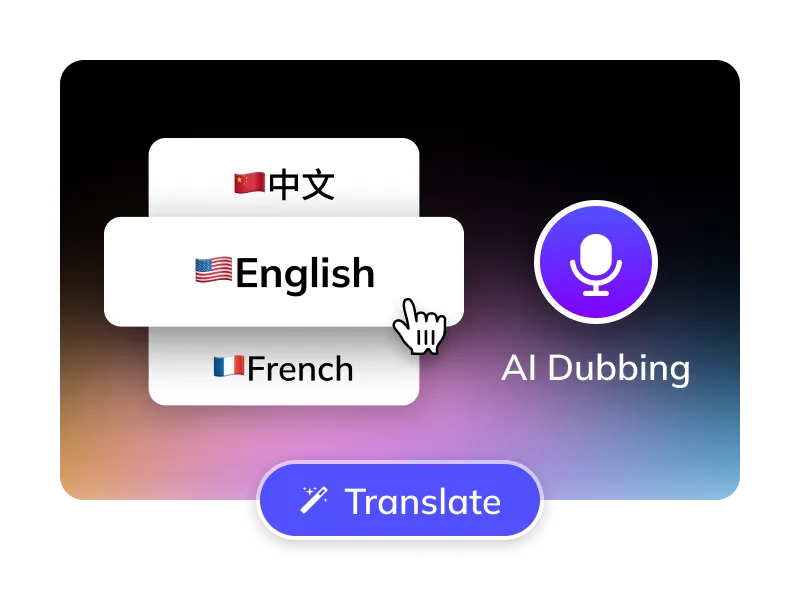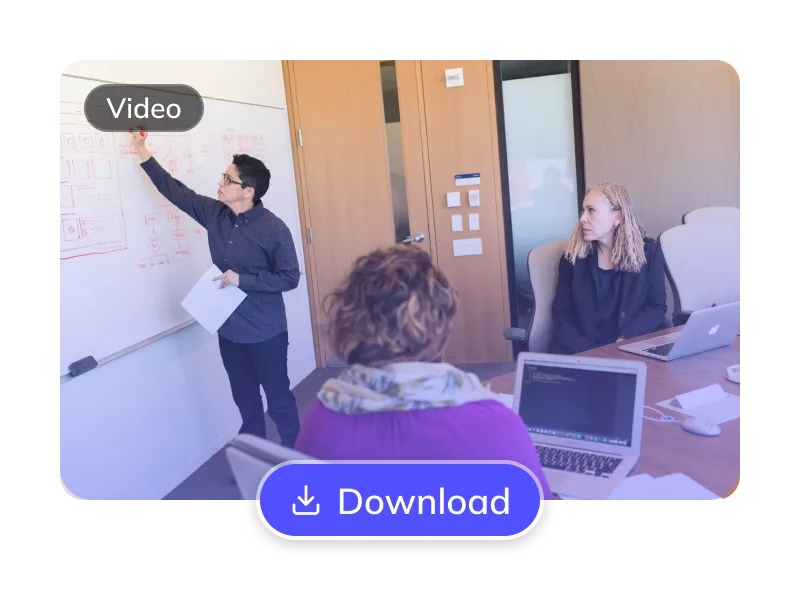How to Translate Portuguese Videos to English ?
Translate Portuguese Videos to Japanese in 3 Easy Steps
Trusted by 1,500,000+ Global Creators and Businesses
Why GhostCut for Your Video Translations?
GhostCut is your all-in-one AI solution for translating Portuguese content into natural, engaging Japanese.
Effortless Project Management
Manage Portuguese assets, subtitles, & Japanese videos. Batch process projects efficiently.
Pinpoint Japanese Accuracy
Up to 99.5% accurate. Optimized for Portuguese-to-Japanese with LLM calibration & multi-agent review for culturally fluent Japanese translations.
Lifelike Japanese AI Dubbing
Choose from diverse, human-like Japanese AI voices (US/UK accents). Emotion-cloning technology captures original tone for natural Japanese delivery.
Flexible Portuguese Subtitle Options
Optionally erase original Portuguese hardsubs for a clean slate. Translate embedded Portuguese subtitles directly.
Smart Multi-Speaker ID (Portuguese)
AI detects multiple speakers in Portuguese videos. Assign or clone distinct Japanese voices per character, with cross-episode consistency for complex Japanese dubs (dramas, interviews).
Efficient Batch Processing & API
Batch translate and dub 100s of Portuguese videos to Japanese at once. Seamlessly integrate with our robust API.
Versatile BGM Control
Keep or mute original BGM. Our unique tech can also isolate sound effects, meeting diverse copyright and distribution needs.
Unbeatable Value
Flexible Portuguese-to-Japanese plans. Try core features free. Automated pro service from just $0.1/minute.
Easy Online Access
No downloads. Instantly translate Portuguese videos to Japanese online. Works on Windows, Mac, & major mobile browsers for cloud processing anywhere.
The GhostCut Edge: Unmatched Accuracy, Speed, and Value.
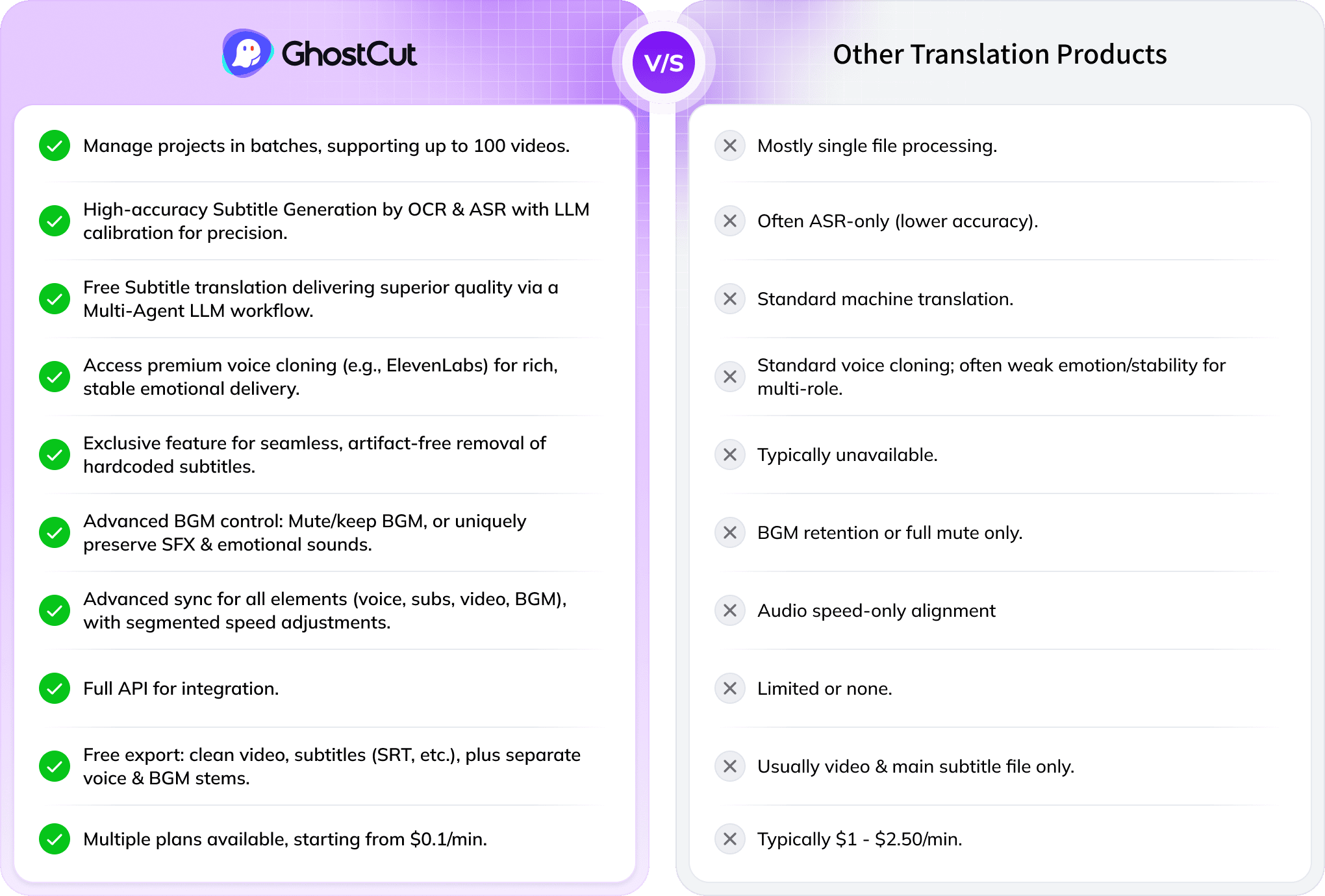
Every Algorithmic Optimization, Engineered for Quality Japanese Video
Mastering Long-Form Portuguese Drama & Multi-Character Dubbing
Translating a 100-minute Portuguese drama with 4000+ lines and many characters into Japanese is tough. Standard AI struggles to tell speakers apart, causing errors. GhostCut’s multi-modal AI (video, voice, text) excels in long-form, multi-speaker content, ensuring accurate, consistent character voices across entire series.
Translate Now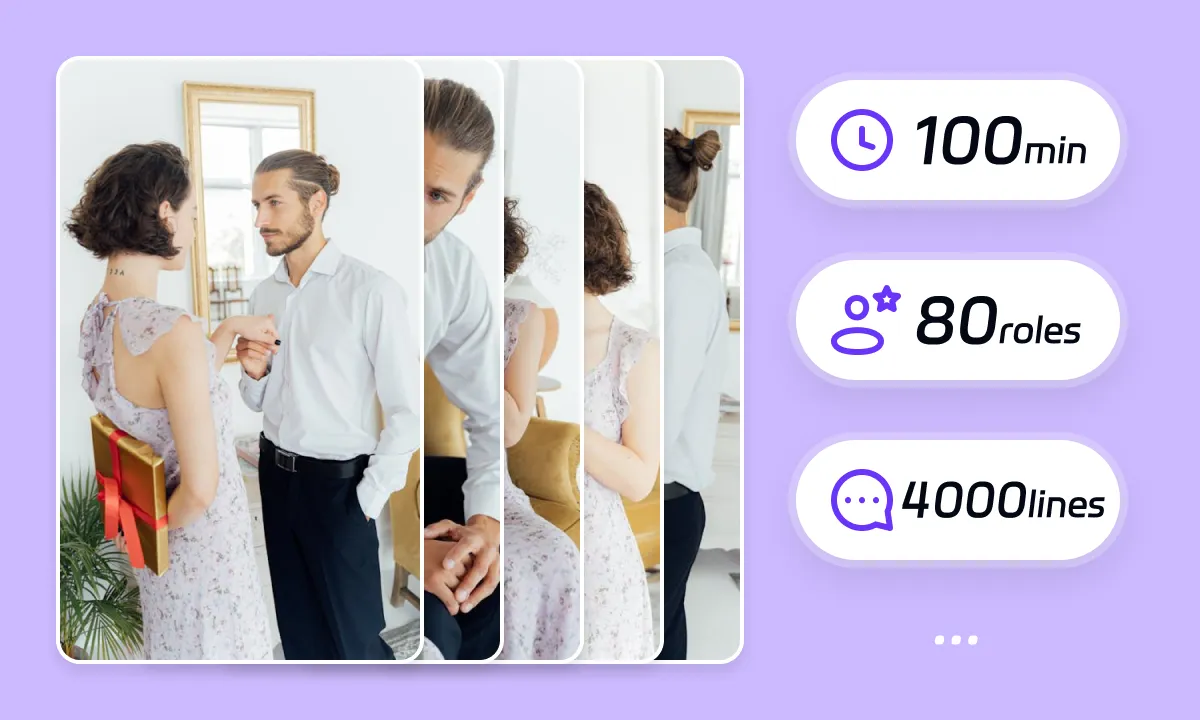
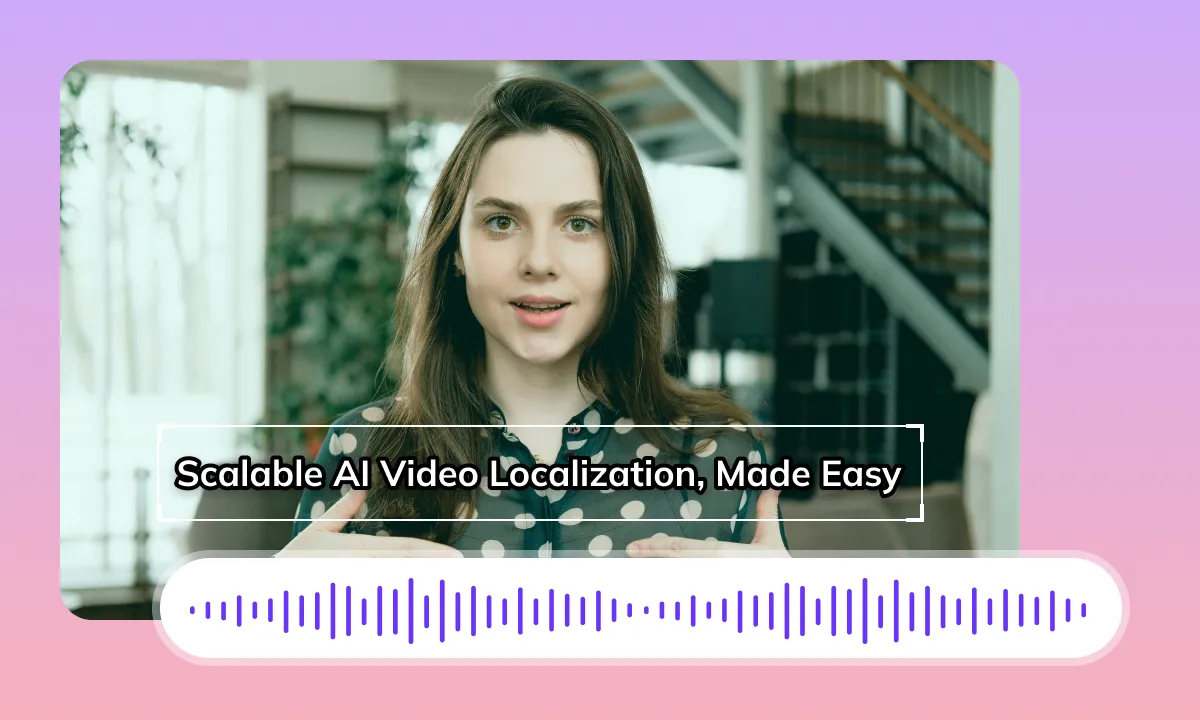
Seamless Japanese Dubbing & Perfect Lip-Sync
GhostCut ensures natural Japanese audio flow by treating related subtitles as whole ideas for TTS. It then precisely times new Japanese subtitles. Since Portuguese-to-Japanese translation can change speech length, our AI expertly adjusts the new Japanese audio, subtitles, video, and BGM to maintain perfect sync, just like a seasoned editor.
Translate NowBoost ROI with Flawless Portuguese Subtitle Removal
Original Portuguese hardsubs can limit your video's global appeal. GhostCut’s AI doesn't just blur; it intelligently reconstructs the background obscured by Portuguese subtitles, even complex ones, for a perfectly clean, high-quality visual. This means better viewer engagement, longer watch times, and higher ROI.
Translate Now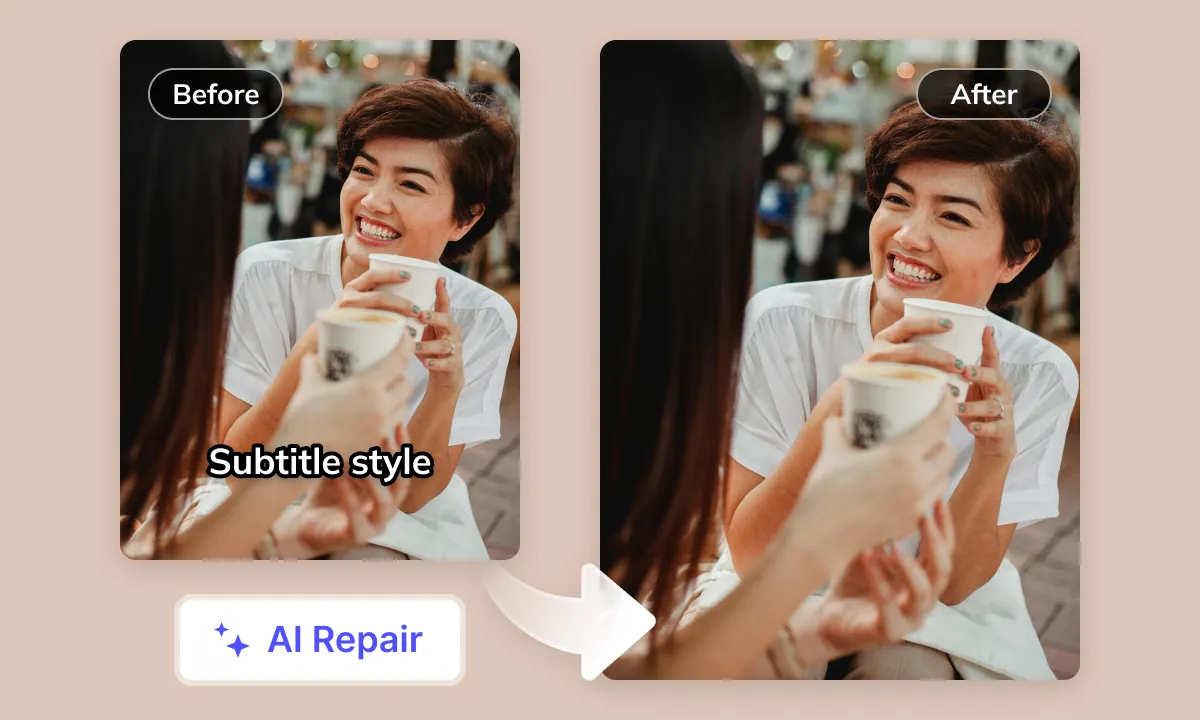
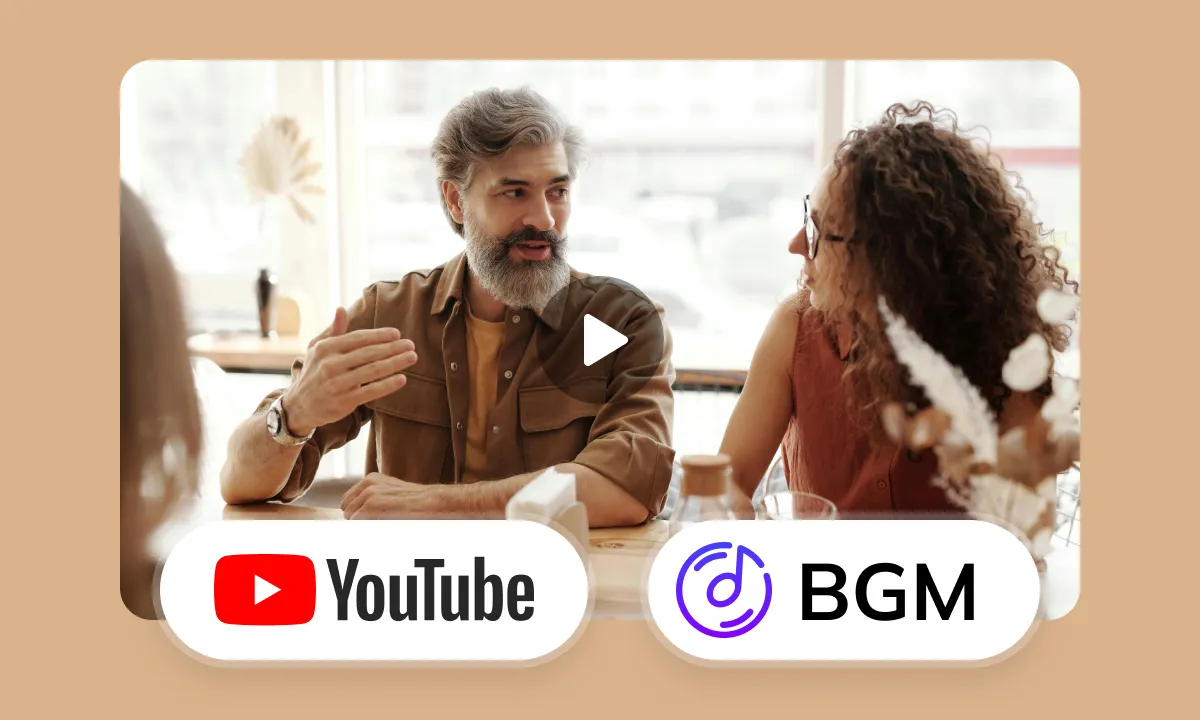
Smart Audio Control for YouTube Creators
Navigating BGM copyright on YouTube is tricky. GhostCut’s advanced audio separation isolates Portuguese dialogue for translation, while intelligently managing BGM, sound effects, and even emotional expressions. Our "Keep SFX, Remove Music" option is a creator favorite for avoiding copyright issues without losing your video’s impact.
Translate NowUnlocking Portuguese Content's Potential in Japan
Diverse Portuguese video content documentaries, travel, cooking, entertainment struggles to reach and engage the broad Japanese audience due to language barriers. The absence of quality Portuguese-to-Japanese translation and dubbing on major platforms significantly impedes content distribution, causing viewer comprehension issues, low interaction rates, and limiting international impact. Consequently, there is an urgent market demand for professional, efficient AI-powered Portuguese-to-Japanese video translation and dubbing solutions
Portuguese to Japanese Video Translation: Challenges and Insights
Handling Embedded Content
Improper handling of embedded elements such as on-screen text, burnt-in subtitles, or pre-recorded Portuguese audio in the original video can significantly hinder the Japanese audience's comprehension and overall viewing experience
Significant Cultural Linguistic Differences
Portuguese and Japanese diverge significantly in cultural context, thought processes, sentence structure (e.g., word order, particle usage), and the nuanced meanings of vocabulary. Accurately conveying slang, idioms, and cultural specificities from Portuguese to Japanese is exceptionally difficult. Literal translations often result in awkward phrasing or misinterpretations, making the production of natural and fluent Japanese a primary challenge
Writing Systems Subtitle Layout
Portuguese utilizes the Latin alphabet, whereas Japanese combines Kanji, Hiragana, and Katakana. When translating Portuguese content into Japanese, it's essential to account for the varying spatial requirements of these writing systems. Proper line breaks and character limits per line are critical to ensure Japanese subtitles remain clear, legible, and avoid appearing cluttered
Speech Rate Information Density Matching
The information density and speaking pace of spoken Portuguese can differ significantly from Japanese speech patterns. When translating Portuguese audio to Japanese, a key technical and linguistic challenge is ensuring the translated content's duration perfectly synchronizes with the original video's visuals while comprehensively conveying all information
Portuguese AI Speech Recognition
Portuguese encompasses numerous regional accents (e.g., Brazilian Portuguese, European Portuguese). The presence of multiple speakers and background noise within video content further complicates and reduces the accuracy of AI-driven Portuguese speech recognition systems
Scarcity of Quality Japanese AI Voices
While the range of Japanese AI voices is expanding, there remains a significant scarcity of natural, expressive voices capable of accurately simulating human emotion. Many current AI voices still sound robotic or lack the nuanced inflection needed for engaging delivery
Lip-Sync Matching Challenges
The pronunciation methods and corresponding mouth movements in Portuguese and Japanese differ substantially. Achieving precise lip-sync synchronization between the Japanese voiceover and the on-screen characters in the original Portuguese video presents an exceptionally complex technical challenge
Top AI Video Translation Standards
An ideal AI video translation from Portuguese to Japanese should encompass: accurate Portuguese speech recognition, culturally sensitive and structurally appropriate authentic Japanese translation, high-quality Japanese voiceovers with attempted lip-sync, and automated audio-visual editing and alignment
Tackling Video Translation Challenges with AI Empowering your Portuguese content for any worldwide scenario.
Your All-in-One AI Translation Studio
GhostCut offers more than just Portuguese-to-Japanese translation. It's a complete AI-powered workflow: subtitle extraction 、 removal 、 translation and proofreading to multi-character dubbing , BGM processing, and final rendering. Go from Portuguese source to global-ready videos, effortlessly.
